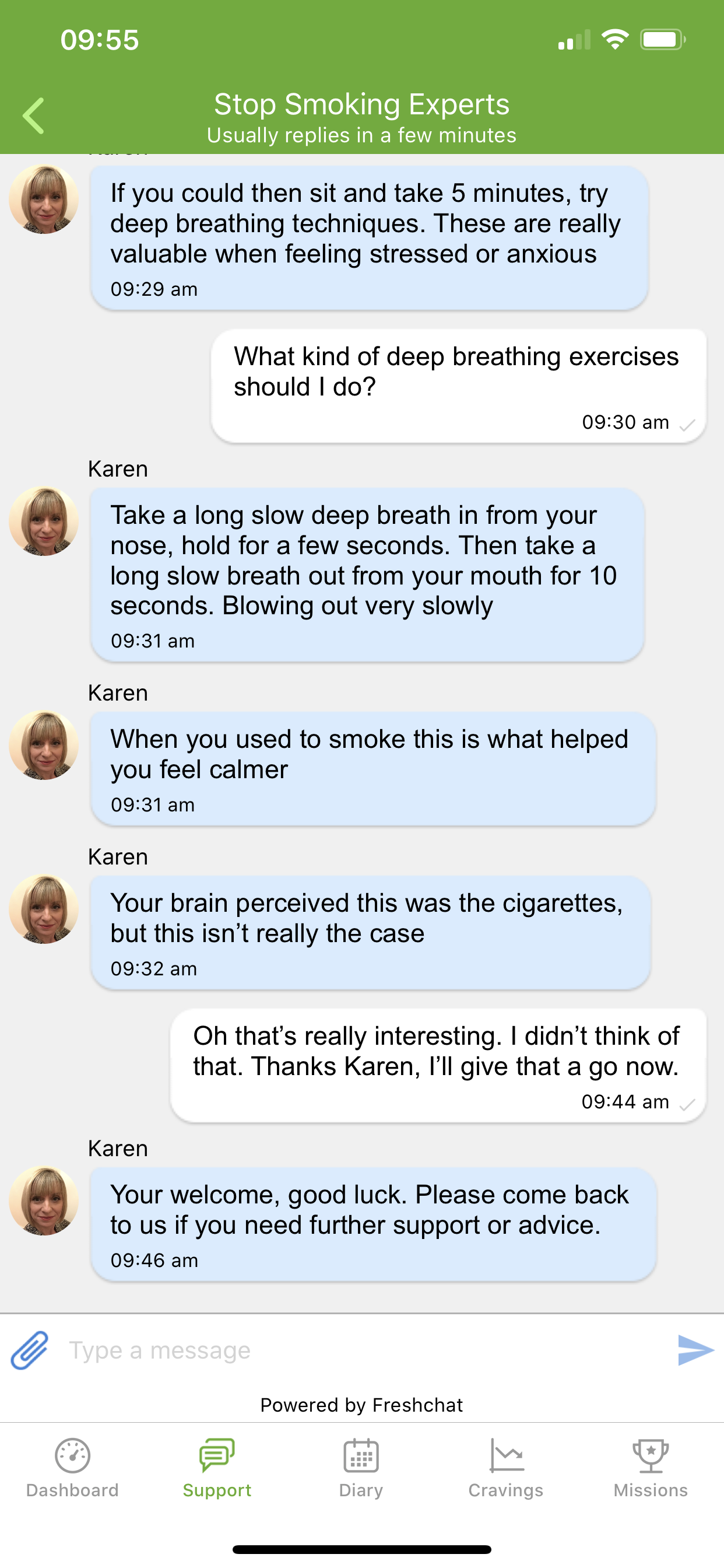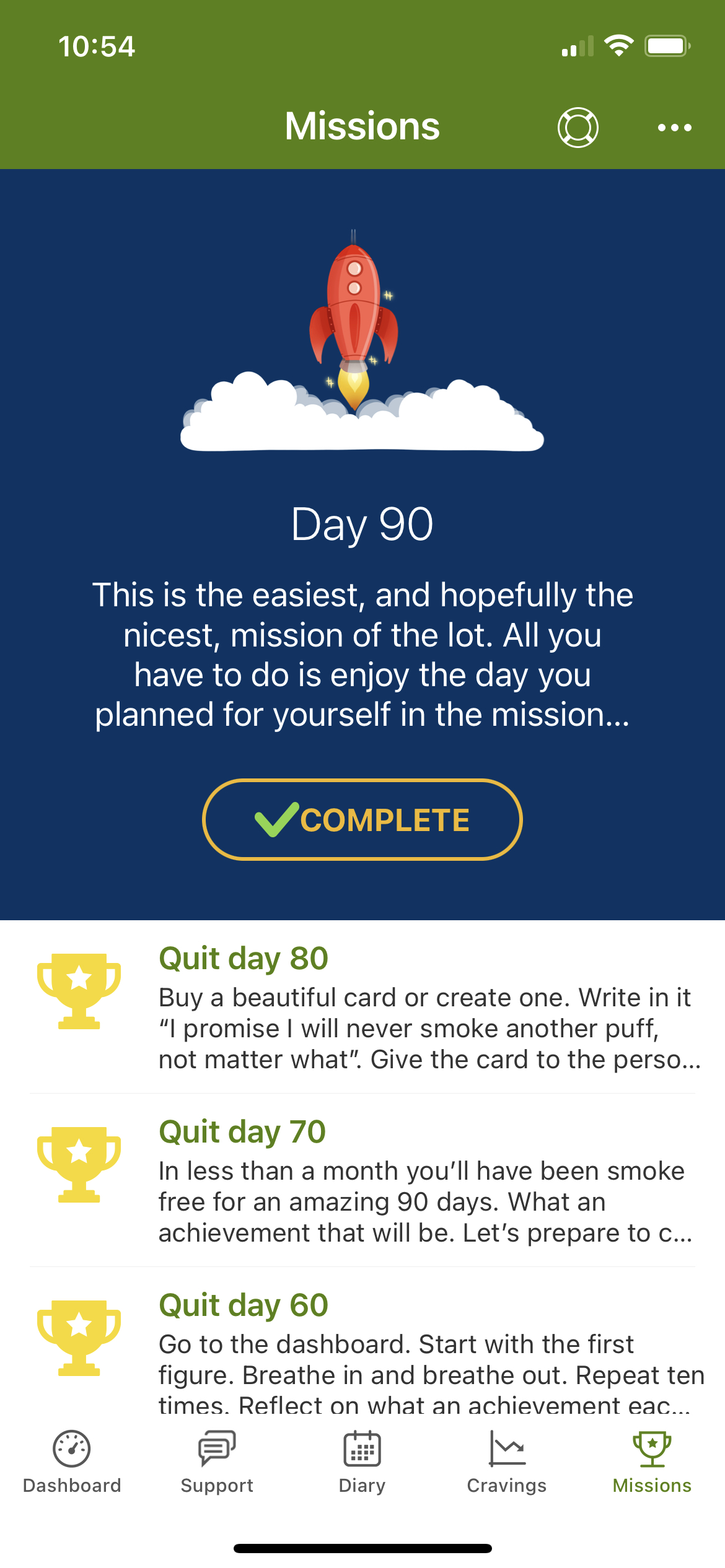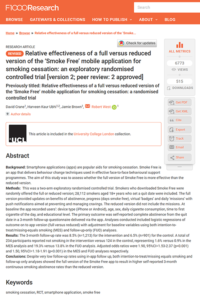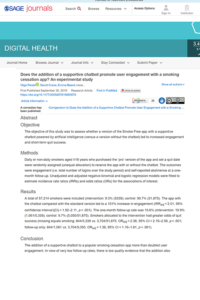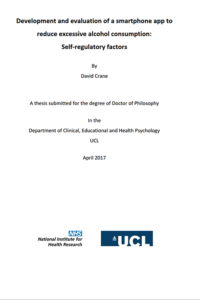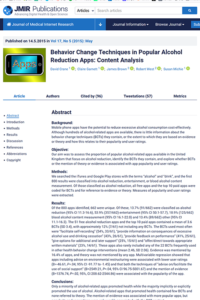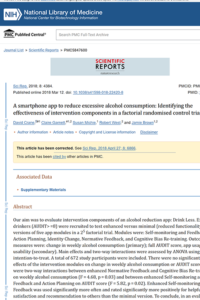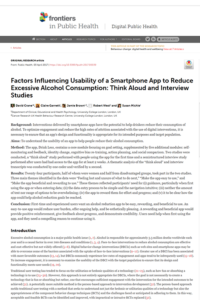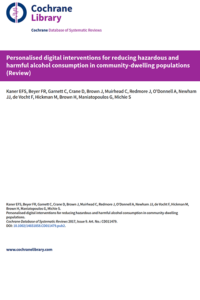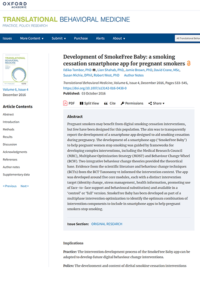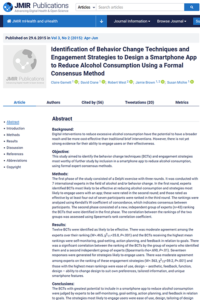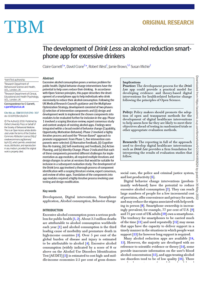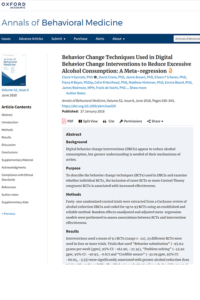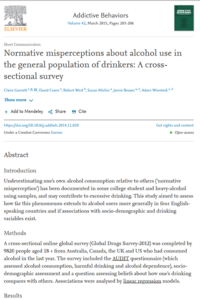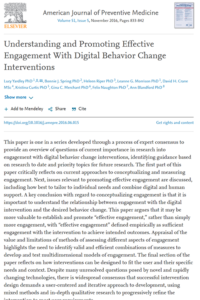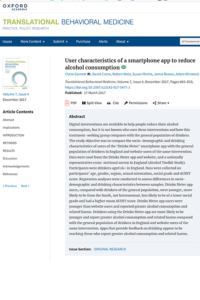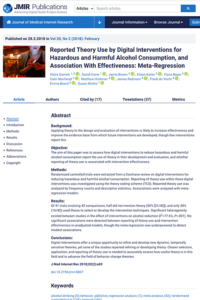How the app works
Much of the app focusses on boosting motivation and increasing self-confidence So you’ll get lots of feedback about the progress you’ve made and the gains you’ve achieved. You’ll get reasons to stay smoke free and facts to bust smoking myths. Other tools are designed to help you feel rewarded for your hard work and achievements. Set goals, commit to them and the app will help you feel proud when they’re achieved.
Every craving needs to be resisted because almost all single lapses turn into a full blown relapse. To help you stay quit you’ll get tips for dealing with different types of cravings and triggers, tools to help you prepare for and overcome difficult situations, techniques to help you get a better handle on what makes you want to smoke and brain-hacking ways to form new habits.
Coming to see yourself as a proud non-smoker is a great way of putting smoking in the past. Non-smokers simply don’t think about smoking, you see. It’s not what they do, it’s not who they are. We’ll suggest exercises you can do to nurture the new you; chief amongst which is the mantra “Not another puff, no matter what”. Make that second nature and you’ll dismiss cravings in seconds.
Lapsing isn’t failing, it’s an often unavoidable part of the process. Many smokers make more than 20 attempts before they succeed. We take an always understanding and completely non-judgemental approach towards lapse. Most importantly, we help you learn from the experience so you can get back on track in a better place. If you need to start again completely, that’s fine too; reset your quit date and the program will begin again when you’re ready.
How to use the app
How to use the app
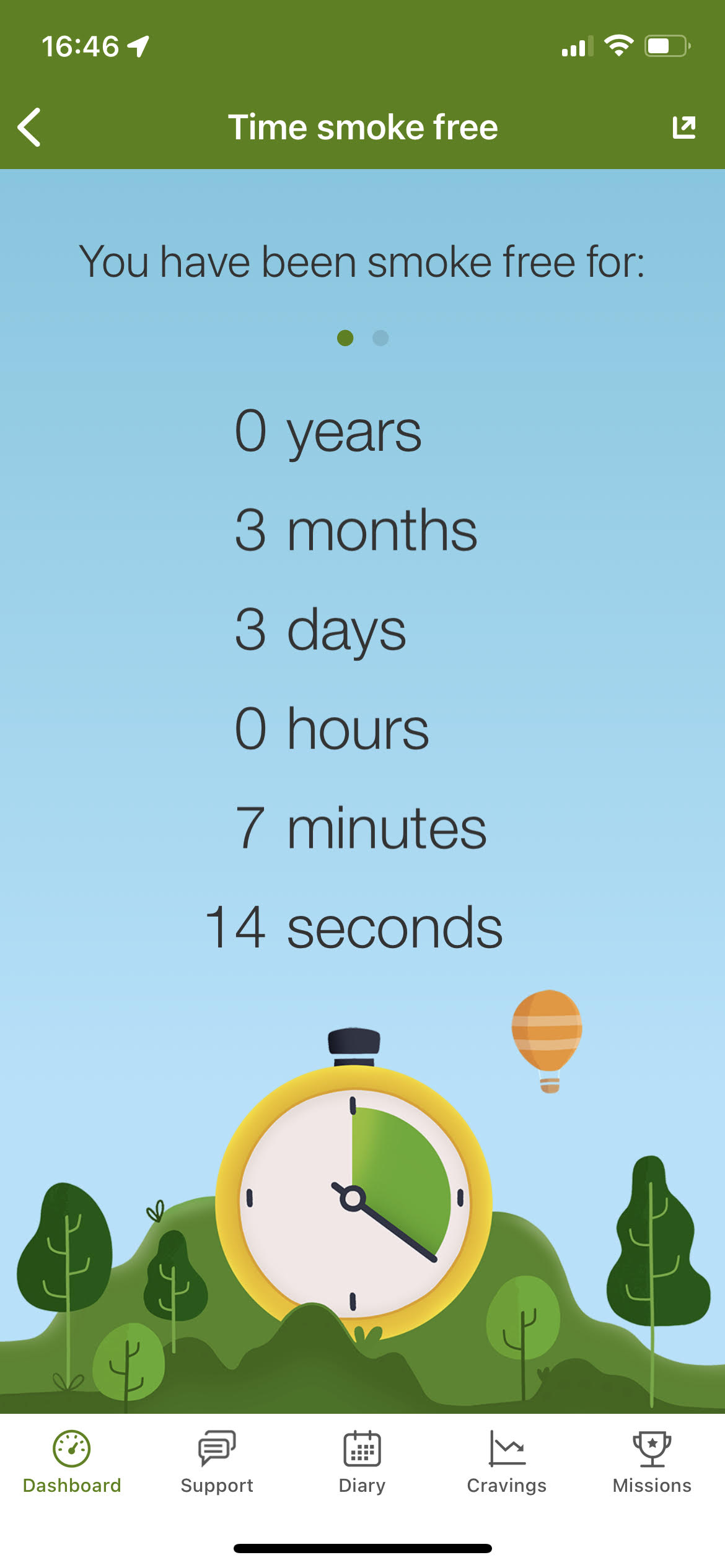
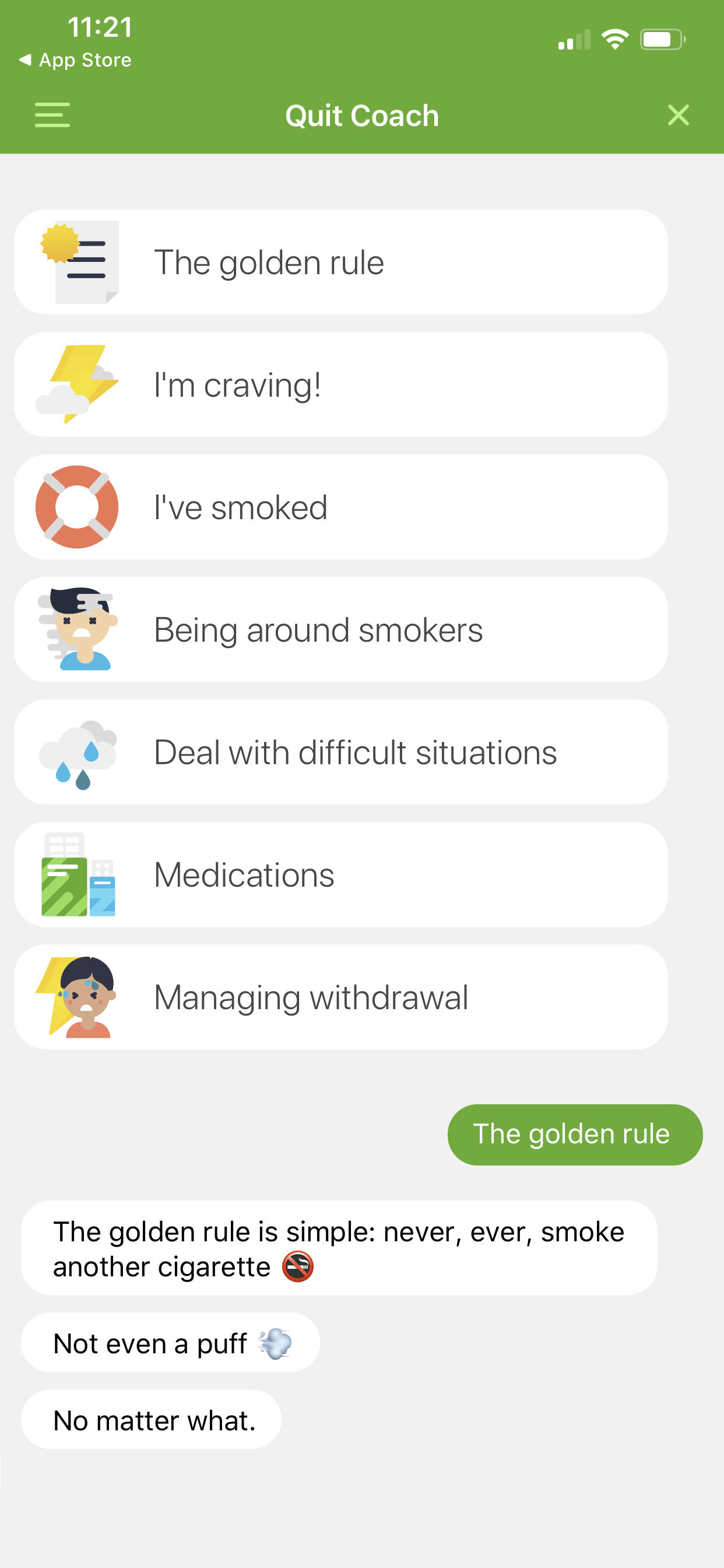
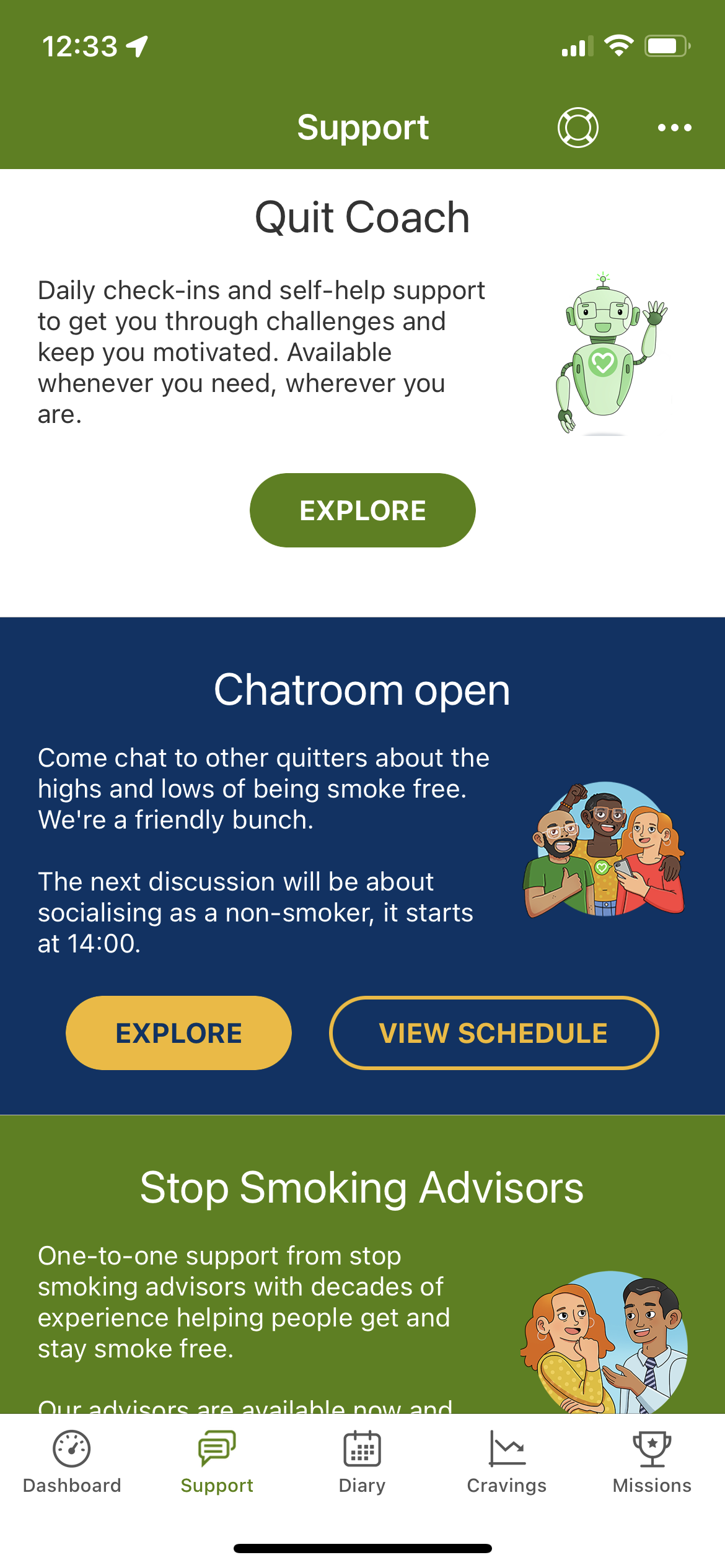


Use the dashboard for a quick boost of pride
Keep checking your time smoke free, how much money you’ve saved and how your health is improving. You deserve to feel proud about how well you're doing.
Do something for your quit every day
Check-in with the chatbot or do a mission every day for at least the first month. Commit to this quit, keep doing things for it, make yourself accountable to something, even if only a bot.
Make full use of the support that's available
Lean on the advisors or other quitters, try the tips, follow the advice. Using help to quit isn’t cheating, it’s smart.
Keep your motivation up. Treat yo'self
Make sure you’ve added your motivation for quitting to the app so it's close to hand if ever you need a reminder. While you’re there, add a reward to buy yourself with the money you’re saving. This gives you something to look forward to and is a great way of making the benefits of quitting feel real.
Don't hesitate to reach out to us
And if you have any questions about the app come to the chatroom or email support@nullsmokefreeapp.com, we love to help.
Publications
Selected Scientific Influences
West R. The PRIME theory of motivation as possible foundation for the treatment of addiction. In: Bickel W, editor. Addiction Treatment: Science and policy for the Twenty-first Century. Baltimore, MD, US: Johns Hopkins University Press; 2007. p. 24–34.
Rothman AJ. Toward a theory-based analysis of behavioral maintenance. Health Psychol. 2000;19:64–9.
Michie, S., Hyder, N., Walia, A., & West, R. (2011). Development of a taxonomy of behaviour change techniques used in individual behavioural support for smoking cessation. Addictive behaviors, 36(4), 315-319.
Abroms, L. C., Padmanabhan, N., Thaweethai, L., & Phillips, T. (2011). iPhone apps for smoking cessation: a content analysis. American journal of preventive medicine, 40(3), 279-285.
Borland, R., Yong, H. H., O’Connor, R. J., Hyland, A., & Thompson, M. E. (2010). The reliability and predictive validity of the Heaviness of Smoking Index and its two components: findings from the International Tobacco Control Four Country study. Nicotine & Tobacco Research, 12(suppl 1), S45-S50.
Doll, R., Peto, R., Boreham, J., & Sutherland, I. (2004). Mortality in relation to smoking: 50 years’ observations on male British doctors. BMJ, 328(7455), 1519
Hughes, J. R., Keely, J., & Naud, S. (2004). Shape of the relapse curve and long‐term abstinence among untreated smokers. Addiction, 99(1), 29-38.
Kotz, D., Fidler, J., & West, R. (2009). Factors associated with the use of aids to cessation in English smokers. Addiction, 104(8), 1403-1410.
NHS Smoke Free web site (n.d.). Retrieved from http://smokefree.nhs.uk/why-quit/timeline/
West R, Brown J (2012) Smoking and Smoking Cessation in England 2011. London. www.smokinginengland.info
West, R., McNeill, A., & Raw, M. (2000). Smoking cessation guidelines for health professionals: an update. Thorax, 55(12), 987-999.
Gollwitzer PM. Implementation intentions: Strong effects of simple plans. Am Psychol [Internet]. 1999 Mar;54(7):493–503. Available from: http://www.ncbi.nlm.nih.gov/pubmed/18272806
Locke EA, Shaw KN, Saari LM, Latham GP. Goal setting and task performance: 1969-1980. Psychol Bull [Internet]. 1981;90(1):125–52. Available from: http://content.apa.org/journals/bul/90/1/125
Handbook of self-regulation: Research, theory, and applications [Internet]. New York: Guilford Publications; 2004. p. 466–91. Available from: http://ezproxy.library.wisc.edu/login?url=http://search.ebscohost.com/login.aspx?direct=true&db=psyh&AN=2004-00163-023&site=ehost-live
